Jean-Marie Blanchet
Jean-Marie Blanchet’s machinated painting
In 2015, with the series Drawing, Jean-Marie Blanchet began a new stage in his art. In keeping with his previous approach, the use of digitally controlled machines adds a new dimension to his work as a painter.
The studio
A gate opens onto a short gravel drive leading to a garden. To the right is the artist’s greenhouse-like studio. The entirely self-built wooden structure, covered with transparent corrugated panels, is comprised of three spaces: in the largest (unheated), the artist produces and exhibits large-format works; at the back, divided into two spaces, is a storage area, and a small heated room storing various machines, materials and supplies, with a plotter at its center occupying almost all the space. The site, made from scratch by the artist, naturally retains a certain do-it-yourself aura. As in Matthew B. Crawford’s Shop Class as Soulcraft: An Inquiry Into the Value of Work, Blanchet takes an active interest in machines, leading him to examine their mechanics, tinker, modify and adapt them to the needs of painting.
Industry, the world of labor and the realm of semi-finished products
Blanchet’s work actualizes certain aspects of an environment familiar to him since his childhood, paying tribute to working-class culture. As in his early painting (Grilles, 2003), his interests lie in industrial paint, in pots used for decoration found on the shelves of hardware stores, bringing readymade domestic hues into the realm of art. He also finds a certain beauty in the semi-finished products of industry, in commonplace equipment that can be repurposed. This interest in industry and the domain of labor, the working-class world of mass distribution and home improvement, is also a way of contributing to the task of breaking down the old but persistent distinctions between “major” and “minor” art. His taste for the faux (imitation leather or wood), as in Wood (2014), Simili (2011), Rustique (2010) or Formica (2009), is similarly motivated. He cultivates it as much as denounces it, puts it to use as much as he over-signifies to upset the established order. Irony and transgression emanate from his productions, which touch on Duchamp’s ready-mades and Roy Lichtenstein’s painting, when the painterly gesture makes an image.
Machines
Blanchet didn’t start out as a geek or technology lover. The story begins in 2015 with the creation of a DrawBot,1 fueled by the artist’s curiosity for the mechanical world, the emergence of fab labs, open source and communities of “makers.” His work and his relationship to machines expresses some familiarity with the polargraphs of Jürg Lehni (Hektor), or Alex Weber’s2 Kritzler.3 However, he in no way wishes to reproduce a drawing or image present on screen, preferring a direct resort to technical software for modeling and machine piloting software.4 Thus, in Slicer, 5 the marks he produces are obtained using a program that produces slices of the objects required for piloting 3D printers. It’s the ghostly presence of an ephemeral virtual entity, the memory of a model to be printed that was not initially intended to be shown.
Delegating to the machine
The series Drawing6, produced in 2015, is the starting point of Blanchet’s first “machinated” paintings, which were created with a digitally driven plotter. As with basic drawing technology (drawing machines, DrawBot), there’s a delegation to machines such that once the program is launched, it runs the code. Yet, when coming into contact with reality (the materiality of the ground or a more or less level, homogeneous surface), micro-accidents occur (graphic curves, slight shifts). For Blanchet, choosing a machine allows him to maintain a distance from psychological and above all expressive approaches to art. This operative “distancing” using mechanical and computerized means interests him especially with respect to the notion of the author. For him, the artist doesn’t have to decide everything.7 This distance, obtained by machine mediation, might recall art methods involving protocols,8 as in those of László Moholy-Nagy with his telephone works (Telefon Bilder, 1923), Sol Lewitt (delegating the production of the work to sets of instructions), François Morellet (a protocol for the spatial distribution of forms), or Bernard Piffaretti (“Piffaretti system”). But unlike conceptual artist Lawrence Weiner, for whom material realization is not always essential, Blanchet’s approach does not spare creating the pieces: the protocol, whether or not it’s digital, does not suffice for accomplishment.
The manual and the technical gesture
While he sets up partly automated computer processes, the artist does not remain a spectator of the machine. He programs it, shuts it down, restarts it and interacts with it. A mediation is established. In this context, hands are not ruled out, they remain present in the active process of formalization. Neither is complete automation of procedures Blanchet’s ideal; rather, he seeks the right distance and presence of the various factors that constitute the work. In the series Fantôme, he orchestrates the meeting of manual gesture and the mechanical ballet of the machine. The colored forms are quickly placed by hand. The work takes place live in the imminent act of doing. The body acting and the senses perceiving are entirely caught up in the action. Taking out two rolls of adhesive tape, he starts a freehand cut out of large colored areas. His actions are not predetermined.9 His approach is deliberately empirical, since for him: “discovery comes from doing.” But make no mistake, this spontaneity bears no similarities to the expressionist gesture. The hand is not expressive here. That would add too much of a psychological dimension, which he repudiates. Instead he seeks to create movement with the tools, or to achieve what he calls “tool gestures” (le geste de l’outil). Thus, at times the hand plays a role in unjamming the machine, it refills the ink, corrects a line, or bypasses the programming to produce more accidents. In Print10 (2018), hands—a rare figurative element in his paintings—are drawn. As recurring elements of instruction sets and user manuals, the figures remind us of their active and necessary role in accomplishing technical gestures in artificial and technological environments.
Sewing
The artist’s choice of machines, notably the sewing machine, predates the use of 3D printers and digital plotters. An interest in textile materiality is present in several of his works: the series Brushup (2009), Patch up (2009), Simili (2009, 2011), Formica (2009), and Convertible (2010). In these works, sewing is a plastic component in its own right. It embodies both a junction, that of the two pieces of textile together, and a discontinuous line obtained directly by piercing the needle through the material. Making this materially visible proves to be an important issue in his work. Patch up, a work comprised of two elbow pads and knee pads sewn onto an imitation leather canvas stretched onto a frame, placed at the exact location of his elbows and knees, is a self-portrait of the artist that offsets the painterly act. Today’s turn toward digital tools is also a form of questioning the traditional methods of the painter. The initially insignificant parallel with sewing now becomes patent. As with the weaving loom, the composition, and mechanical and digital tracing, are done horizontally. The plotter, which, in his hands has become a painting machine, is deployed on the scale of the work to be produced. The paradox of a painting already delimited by the tool that implements it. William Morris looms somewhere in the background.11 Machines, as Blanchet develops and uses them, are means of free self-production that constitute emancipatory spaces of creativity: a way of contesting the prevailing industrial system of production.
Painting first and foremost
Whether in Crush12 (2013) or his machinated painting, Blanchet never stops fighting “with” painting. Never missing the opportunity to refer to the foundations, he contests traditional methods as much as materiality, bringing his operational modes up to date and analyzing the ways in which they’re expressed. He enjoys recreating and undermining certain art trends (geometric abstraction, concrete art, or Fluxus) and operating methods of twentieth century art (collage, monochrome, readymade, etc.). Thus his work reflects as much an interest in the materiality of Supports/Surfaces as the disparagement and contestation of the art categories supported by Fluxus. He is also keen to emphasize the objectal quality of his painting: its thickness (letting the paint run over boundaries), its materiality (placing the motif at the border, as in Domestic, 2010), the back as much as the frontside, the frame and supports.13 He claims “one always needs to exaggerate in art,” exaggeration brings the invisible to light. When Blanchet uses machines, he configures them to allow for painterly work. While pointing out that “all software leaves an impression,” and that technique induces forms, he tries to expose the results of the “process” he implements. In this sense, his paintings attest to their manufacture, letting us see the way they were produced and the tools that gave rise to them. But Blanchet is not presenting his machines. In the background, they remain the quiet tools of his painting that he studies and hones, trying to capture their aesthetic potential and formalizing powers.
Notes
1 A DrawBot is a small open-source robot equipped with a tracer (marker, brush or pencil) that allows it to produce computer programmed shapes. Blanchet’s first drawbot was created with Lego Mindstorms.
2 But also with more elementary graphics tools like spirographs, normographs and plotters used by engineers and architects in the 80s for their plans.
3 Der Kritzler, which means “scribbler” in German, was created by Alex Weber in 2011. https://tinkerlog.com/2011/09/02/der-kritzler/
4 Blanchet uses Processing and Onshape as tools for creating forms, modeling and CAD.
5 The cross-hatching that appears corresponds to the fill rate of a part to be printed. The reference models, which refer to parts of technical objects that he previously printed himself, undergo changes of scale. By showing them in this way, enlarged, overlaid on other sections of objects, Blanchet generates hybrid representations which attest as never before to a chimerical interiority of the object, revealing the beauty of the profane technical object.
6 The Drawing series is, in fact, an indirect product of machines. The works were produced by manually copying tests and samples produced with the help of his first plotter, revealing details, errors and accidents that occurred during his first attempts.
7 This receptiveness to alterity and external parameters was already present in his work, for example by giving the gallerist showing his work, or the sponsor, the option of choosing the color of the work to come (Fantôme series). In this respect, he cites the collective publication Faire, faire faire, ne pas faire – Entretiens sur la production de l’art contemporain (Geneva: Presses du Réel, co-published with HEAD, 2021), which collects different accounts giving voice to the assistants and anonymous creators of an artist’s work.
8 Blanchet appreciates work that follows rules or protocols, which he connects to Jean-Marc Huitorel’s publication Les règles du jeu. Le peintre et la contrainte (Caen: FRAC Basse-Normandie, 1999).
9 In his approach, premeditation and chance coexist. His protocol for the series Fantôme uses a logic of superimposing different adhesive layers, reserves and potentially uncoverable zones that presuppose some prevision. But the process doesn’t have to be perfectly defined upstream. Prevision remains relative. The set up allows a degree of play or indeterminacy.
10 The series Print has certain formal characteristics in common with Fernand Léger’s Les Constructeurs (1950): perforated forms, the coexistence of colored flat tints and lines as well as an interest in the world of work and the domestic world.
11This refers to a cartoon by Edward Coley Burne-Jones (1833-1898) which shows William Morris sitting at his loom for a weaving demonstration organized by the Arts and Crafts Exhibition Society (1888).
Translated by Elaine Krikorian.
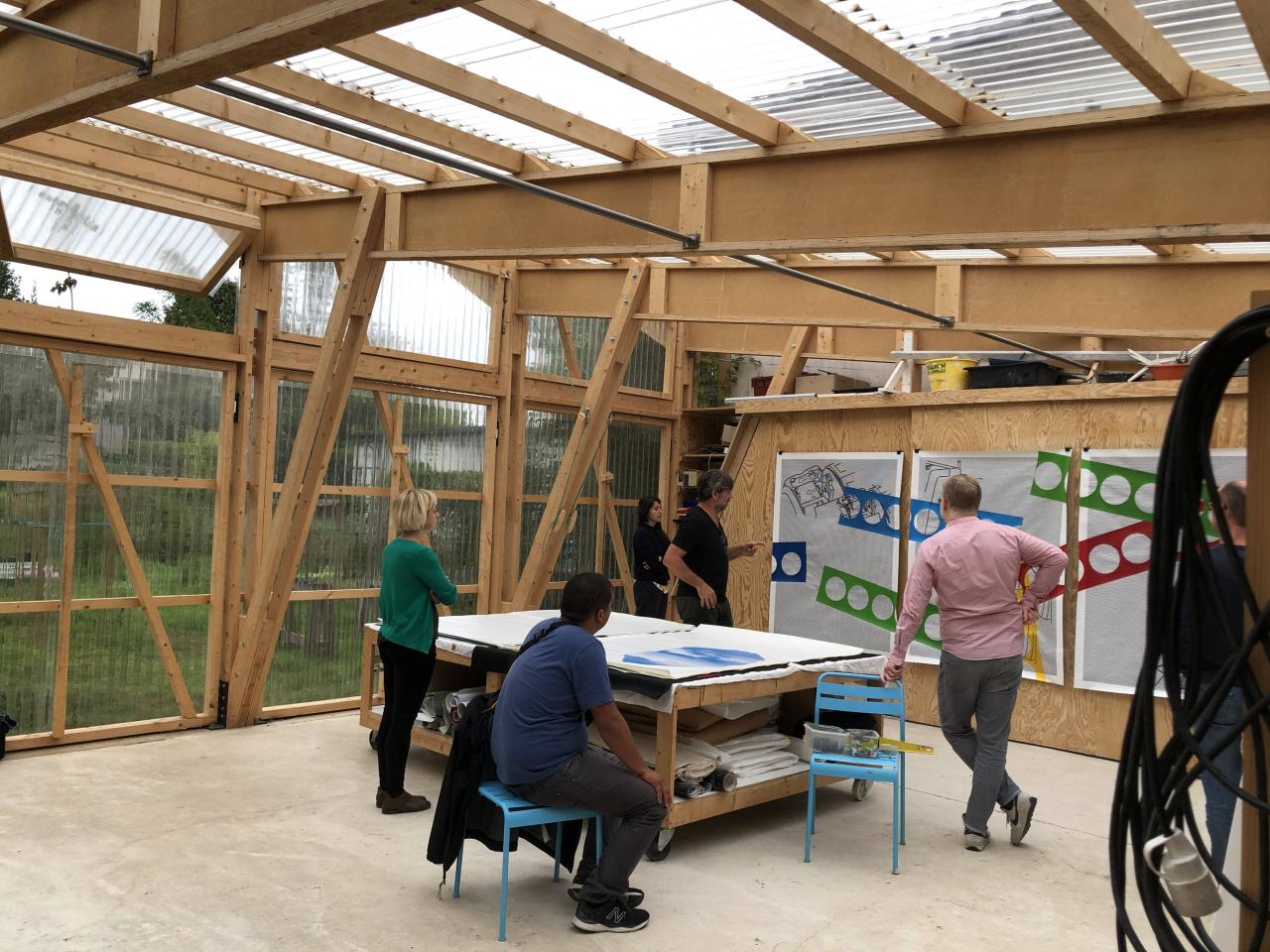
Meet-up, 16 septembre 2021
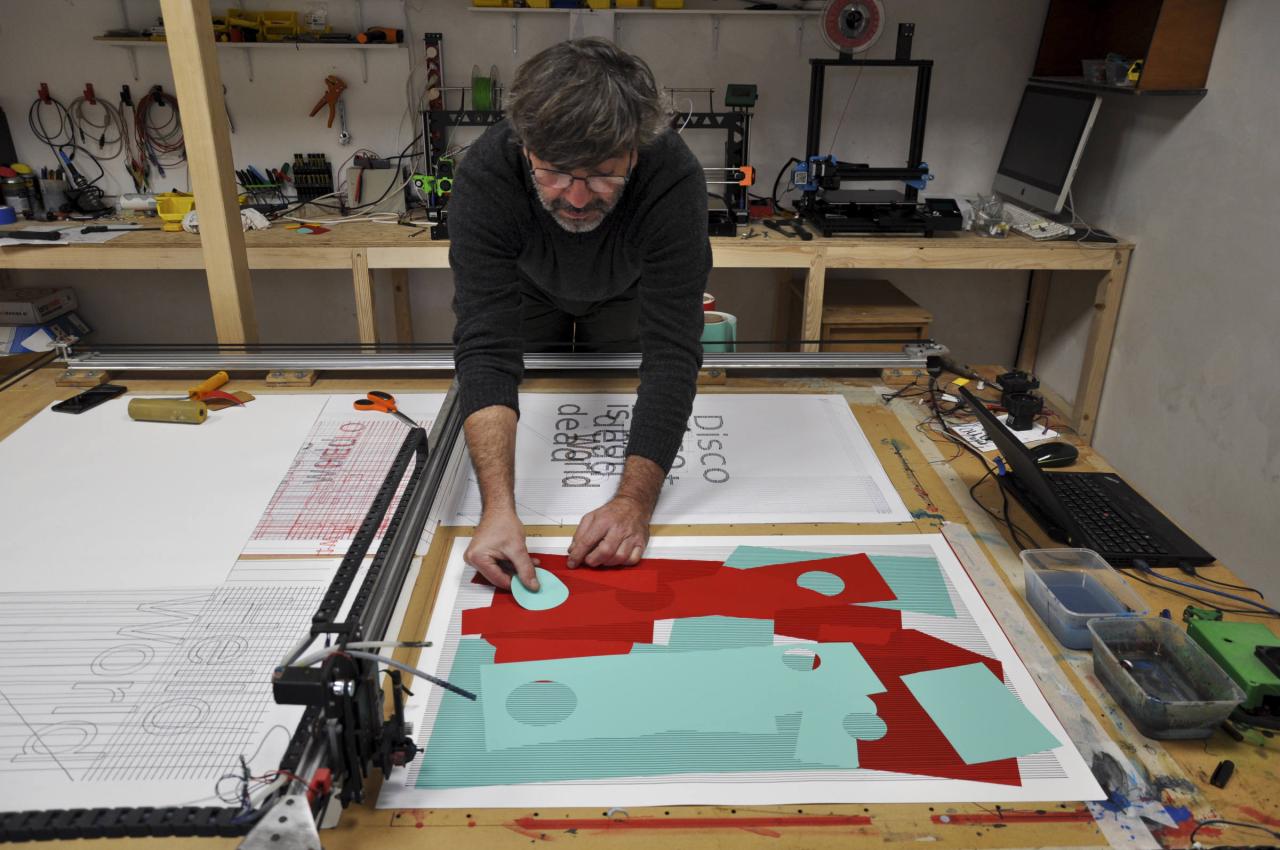
Crédit photographique : Sophie Fétro

Peinture glycérophtalique et acrylique sur toile, 200 x 160 x 8 cm
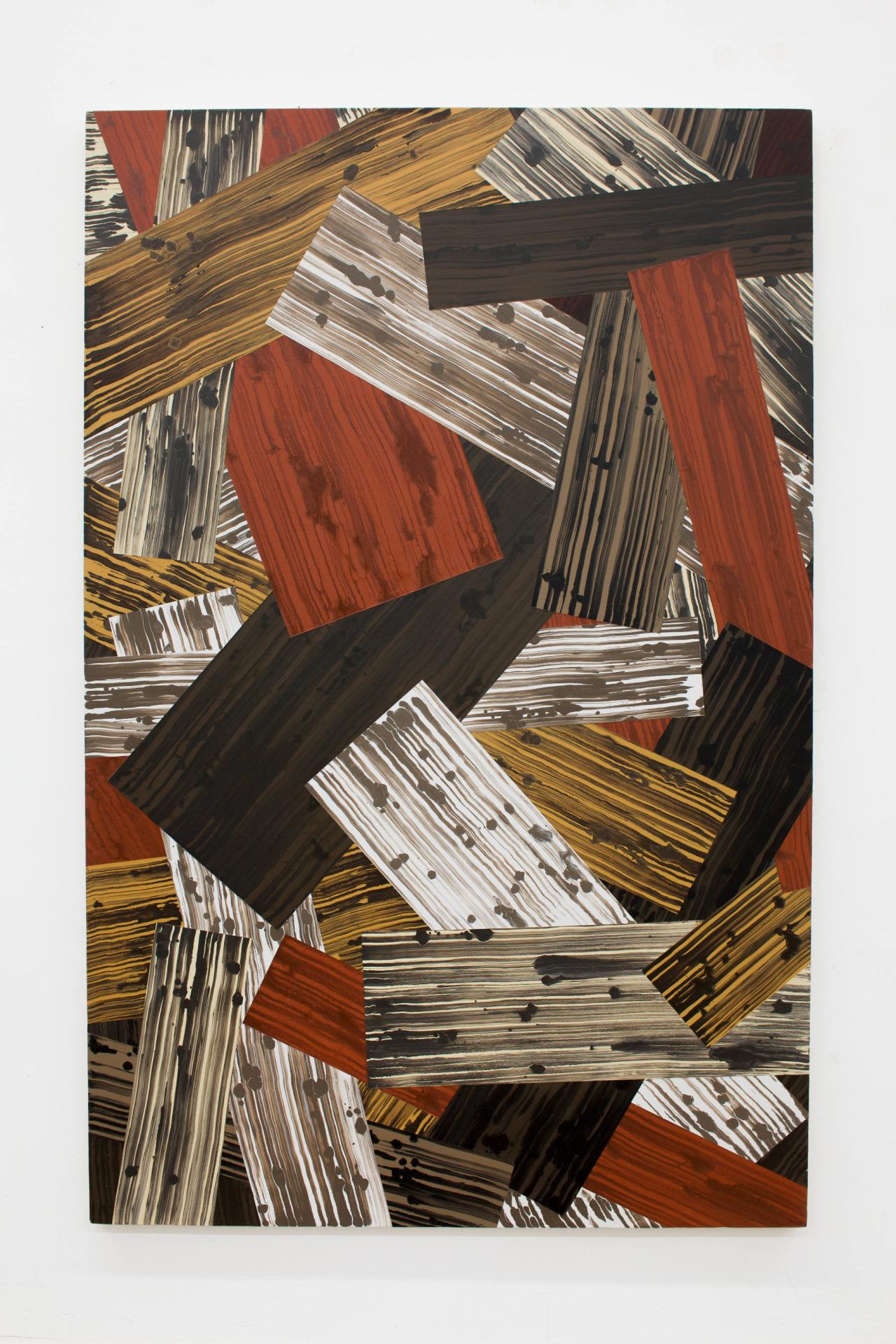
Acrylique sur toile, 110 x 170 cm
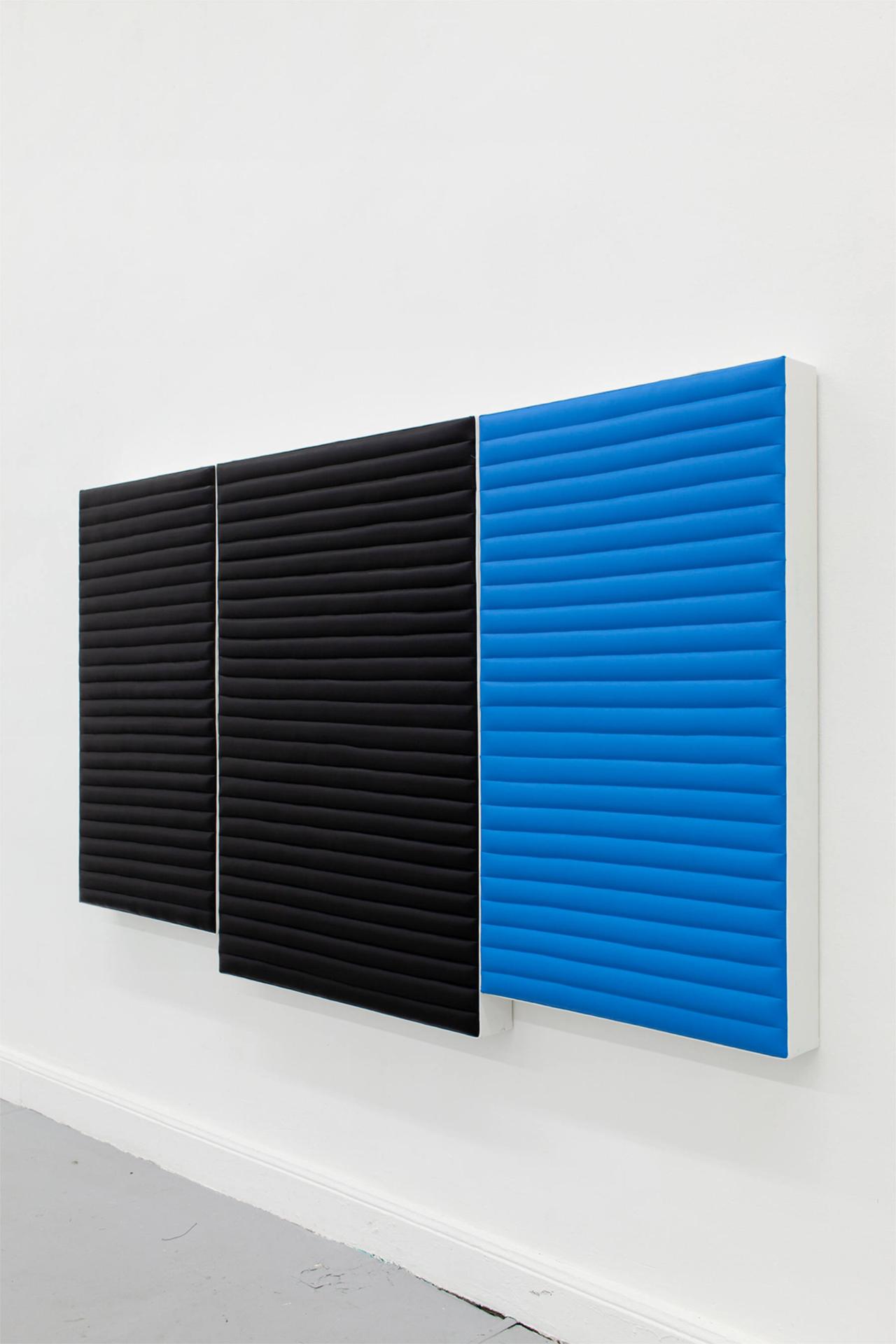
Acrylique, simili cuir, bois, 225 x 124 x 10 cm (2 formats de 69 x 115 x 10 cm et 1 format de 87 x 124 x 10 cm)
Collection Frac Nouvelle-Aquitaine MÉCA
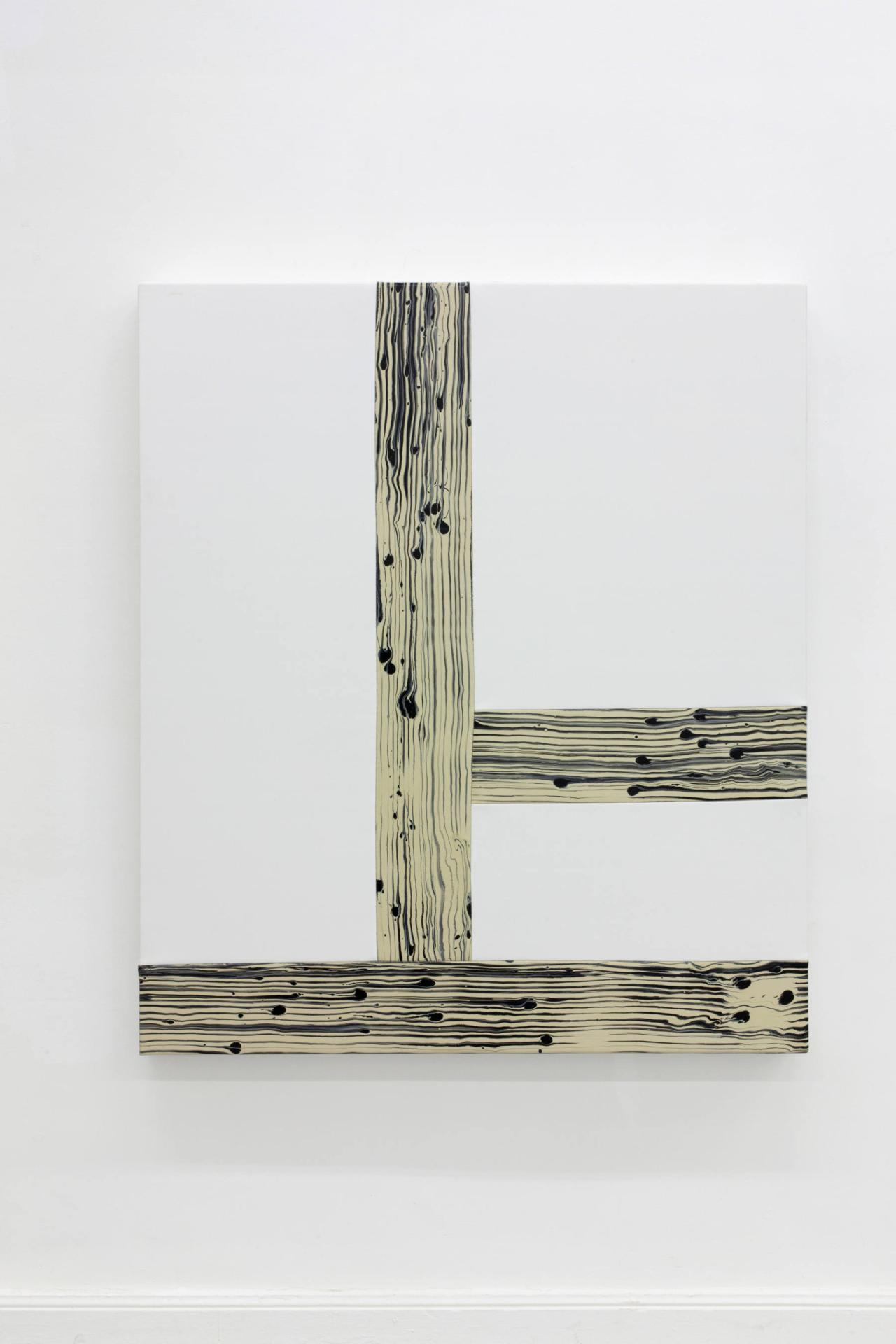
Acrylique, simili cuir, bois, 130 x 150 x 10 cm
Collection Frac/Artothèque Nouvelle-Aquitaine
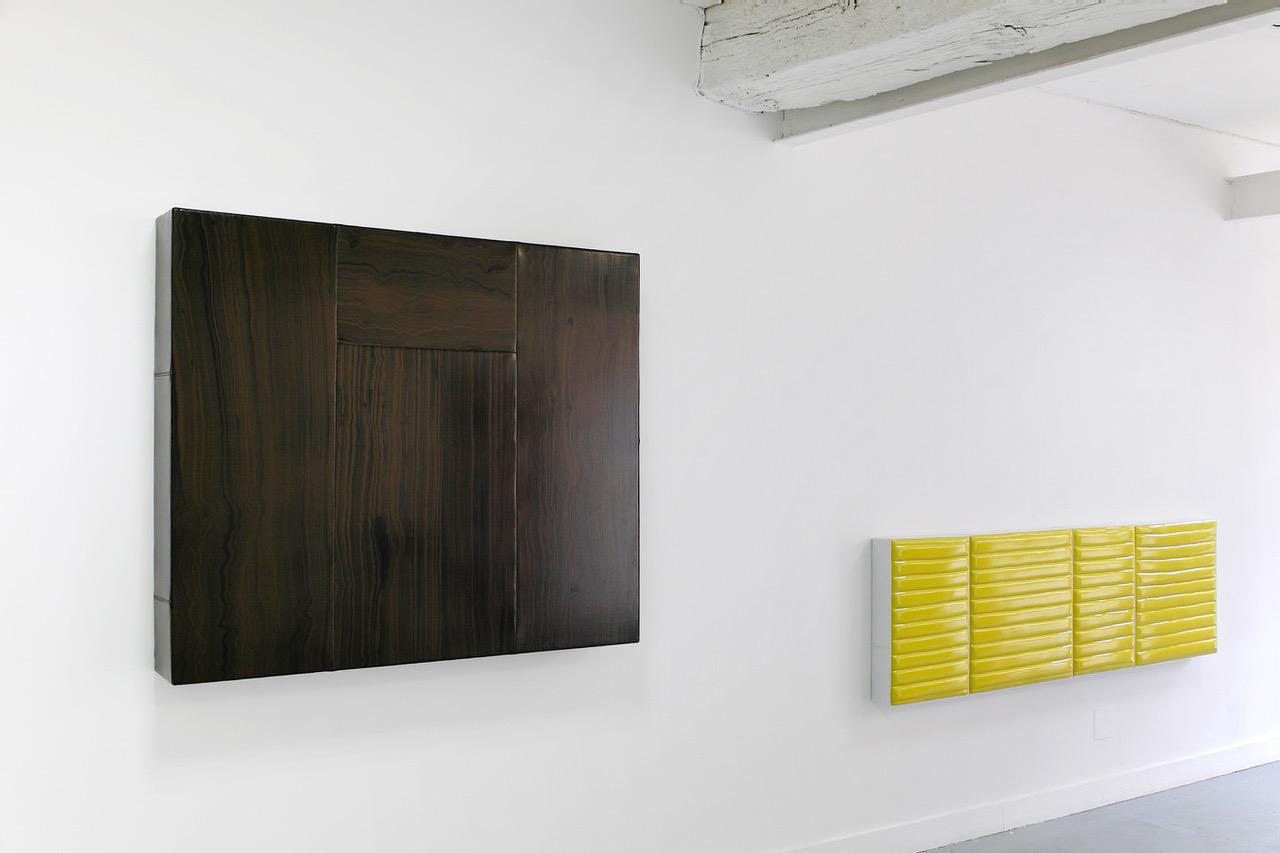
(à gauche) Acrylique sur simili cuir, bois, 140 x 120 x 18 cm
Vue de l'exposition Rustique (2010) à Pollen, Monflanquin
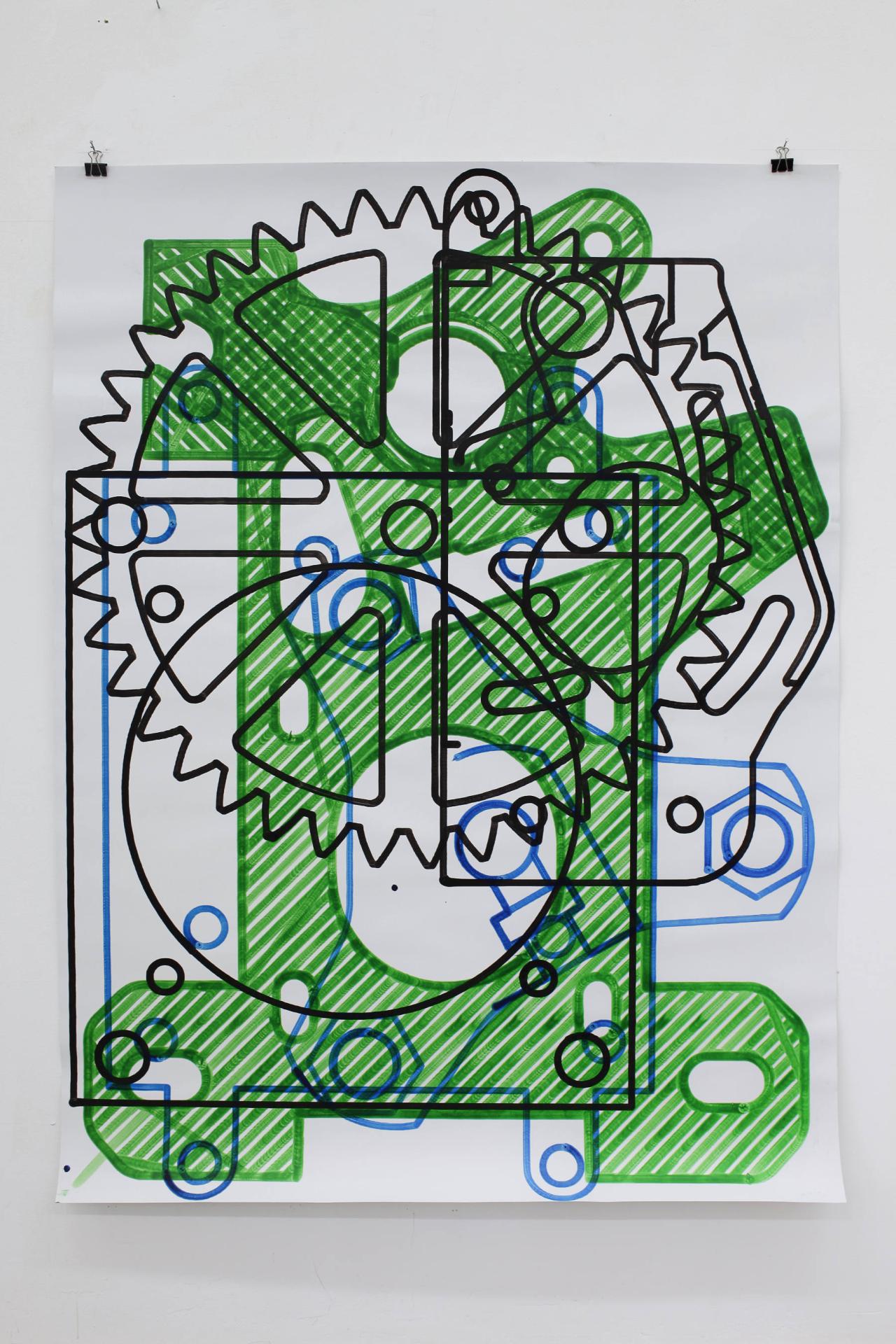
Peinture acrylique sur papier, 120 x 160 cm
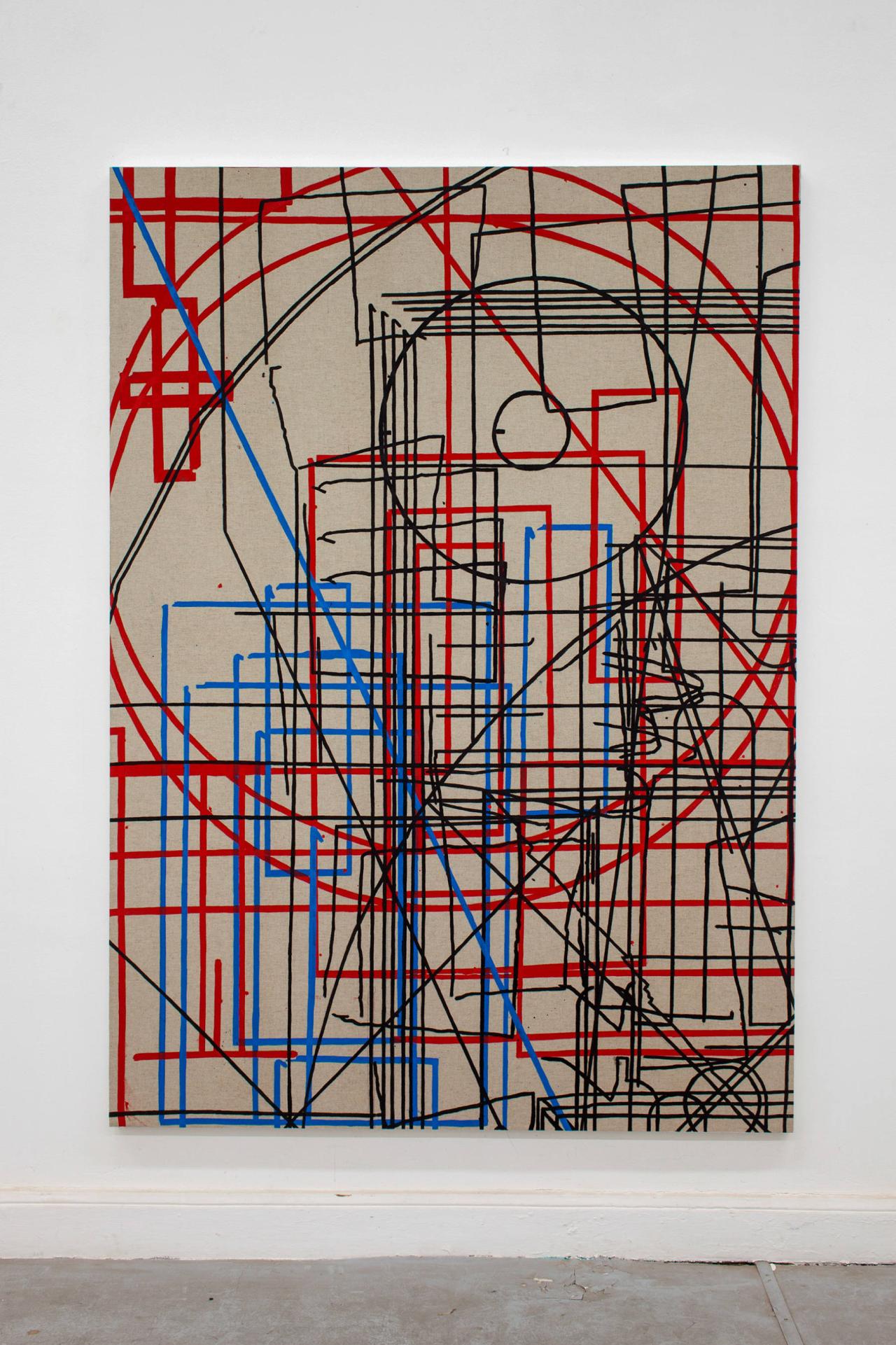
Acrylique sur toile, 146,5 x 205 cm
Collection Frac/Artothèque Nouvelle-Aquitaine

Adhésif et marqueur sur papier couché, 60 x 80 cm
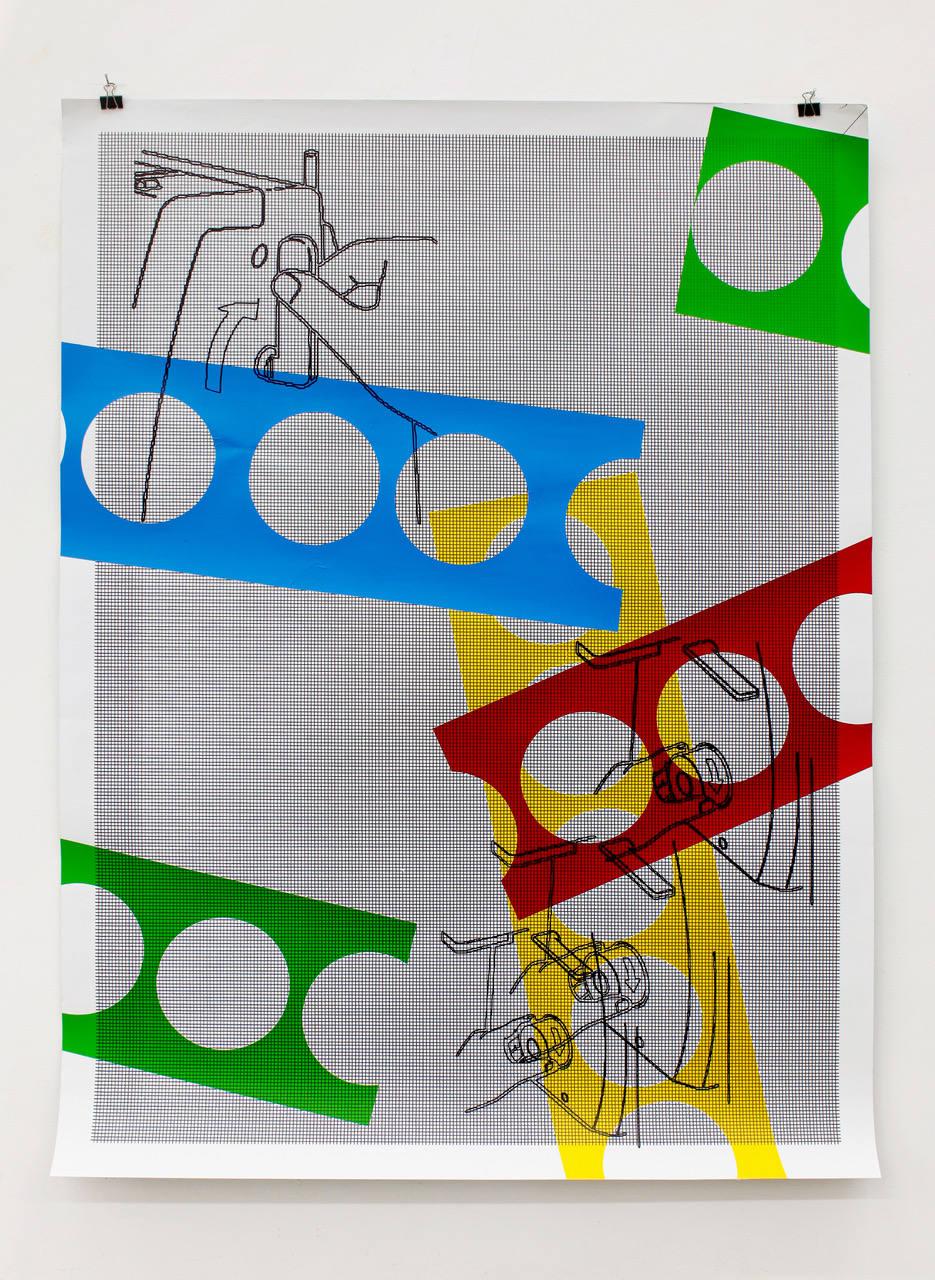
Adhésif et marqueur sur papier, 120 x 160 cm
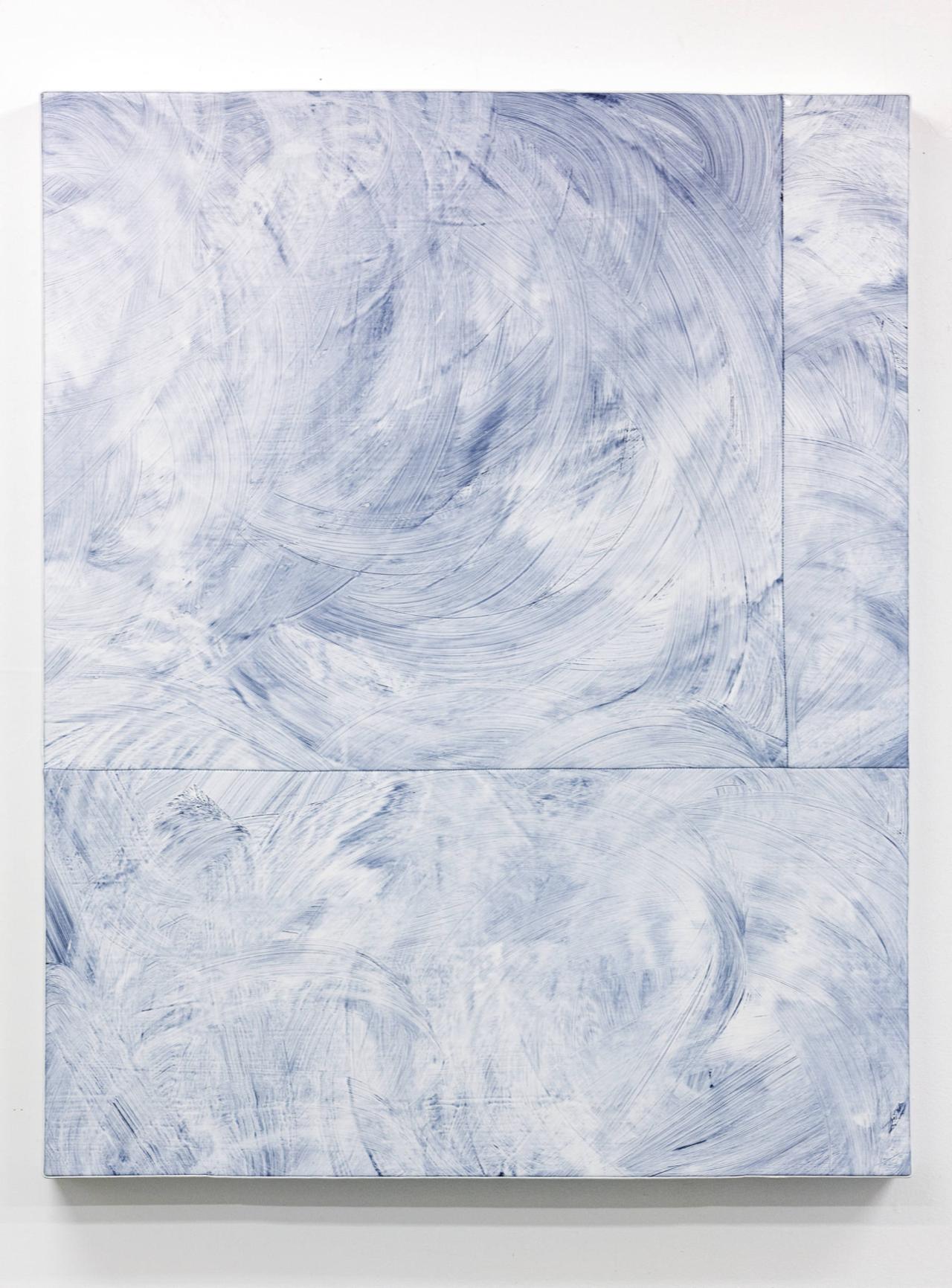
Acrylique sur simili cuir, bois, 140 x 110 x 10 cm
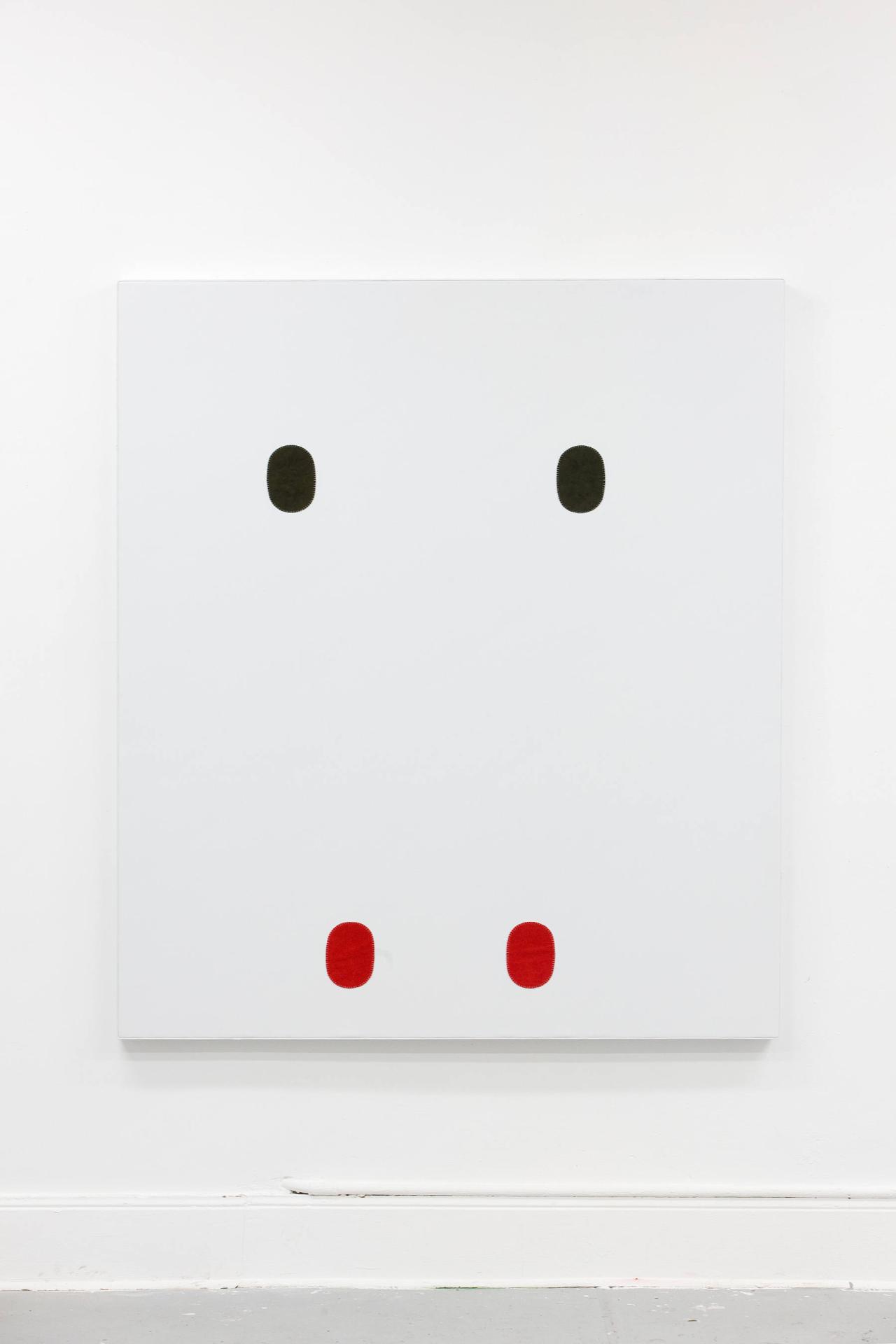
Genouillères et coudières, simili cuir, bois, 141 x 161 x 8 cm
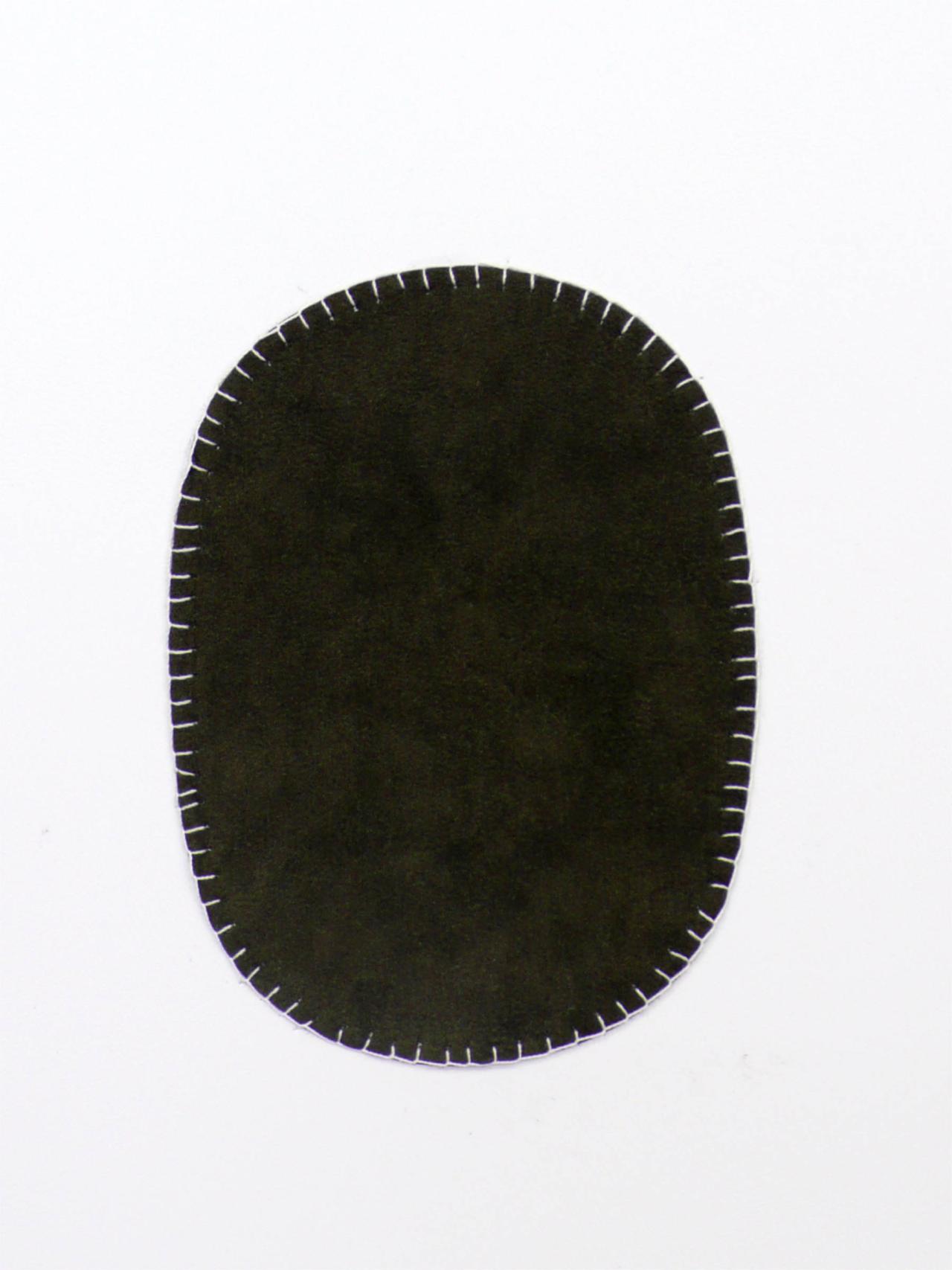
Genouillères et coudières, simili cuir, bois, 141 x 161 x 8 cm

Acrylique sur simili cuir et bois, 140 x 180 x 10 cm
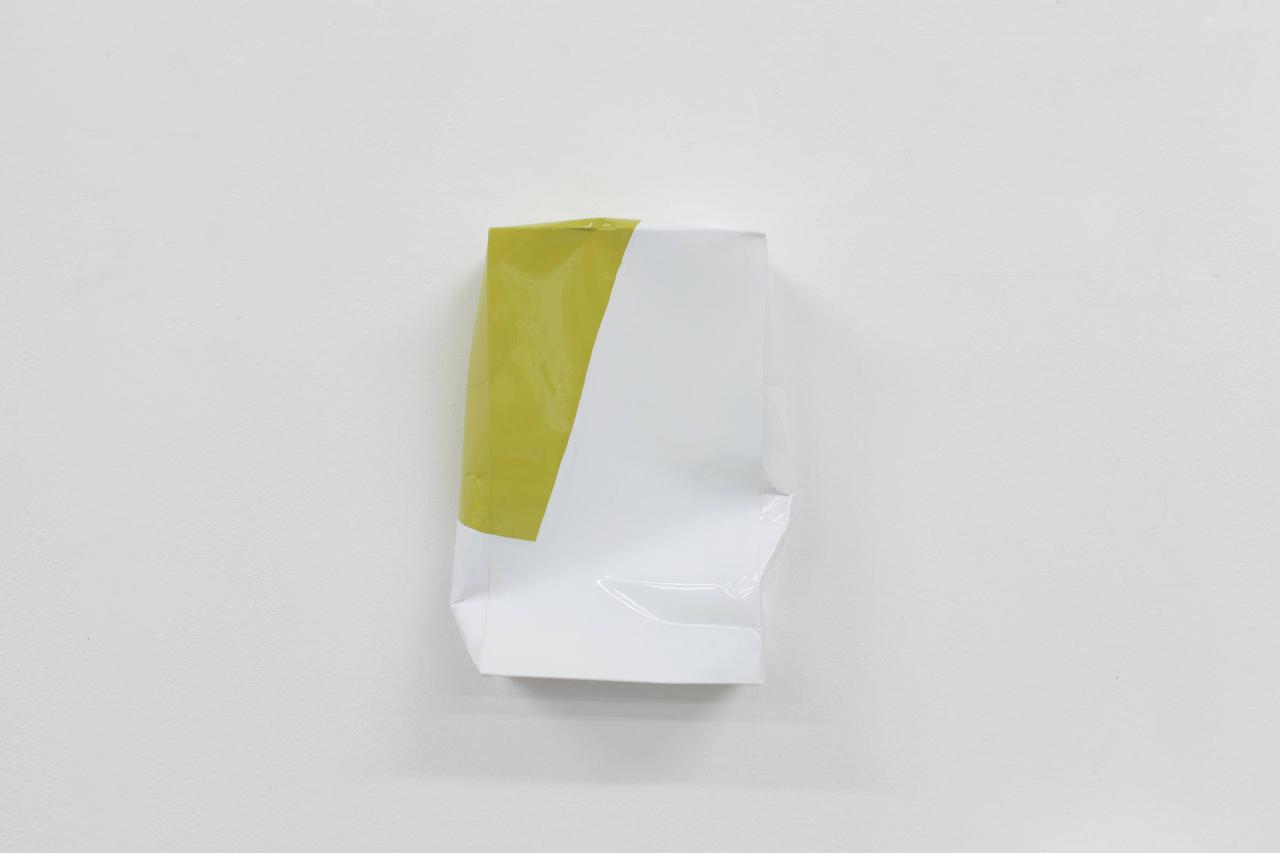
Laque sur plâtre, 30 x 21 x 12 cm
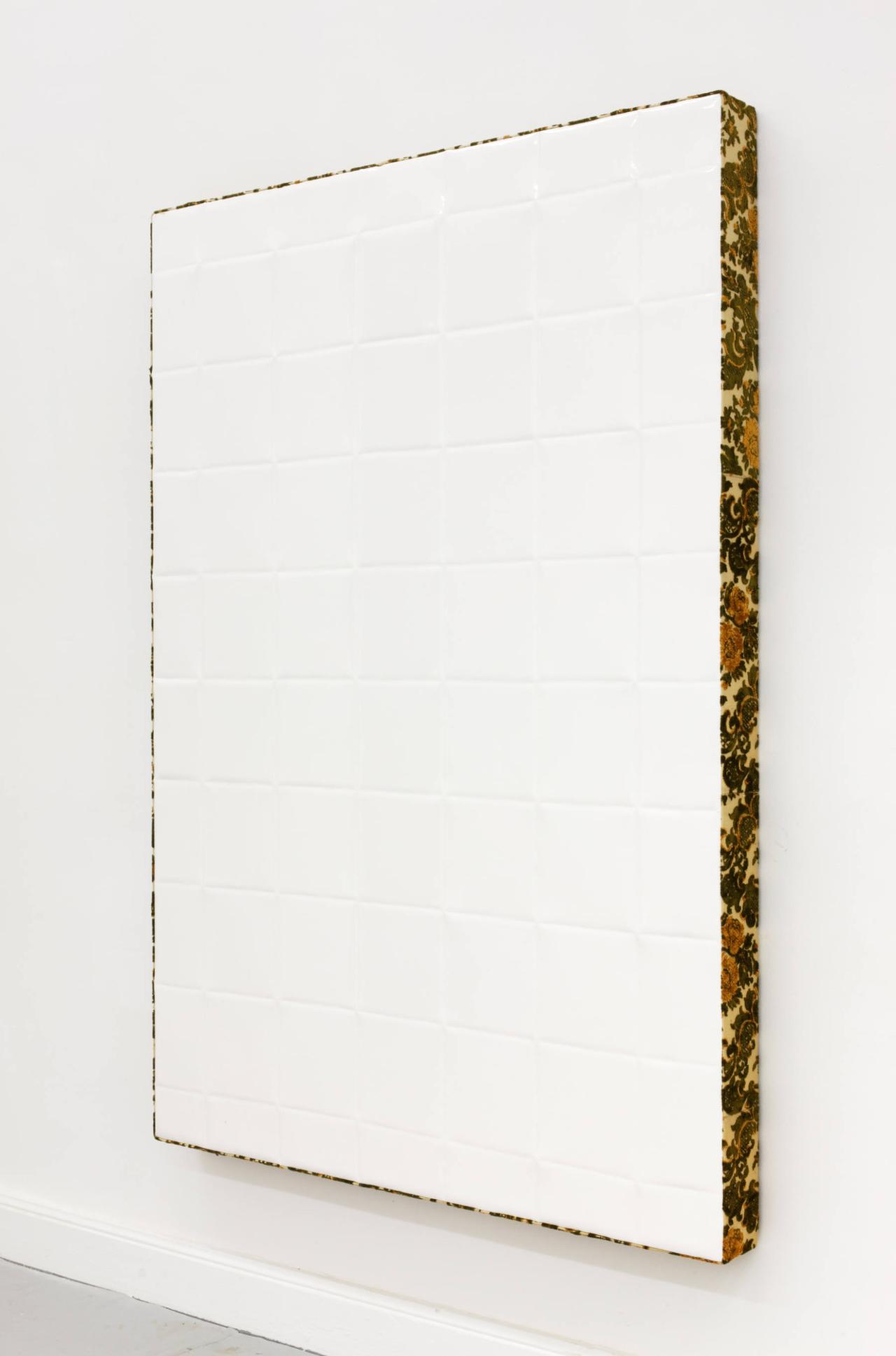
Acrylique, simili cuir, velours de Gênes, bois, 135 x 185 x 11 cm